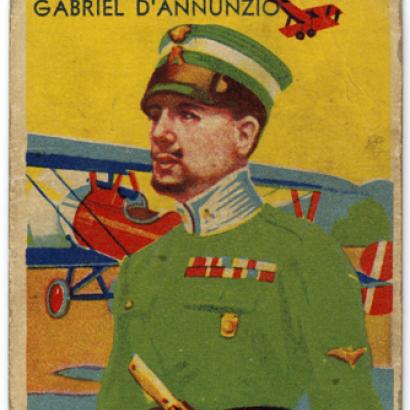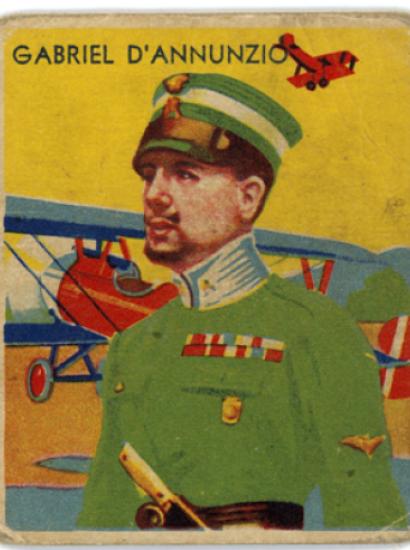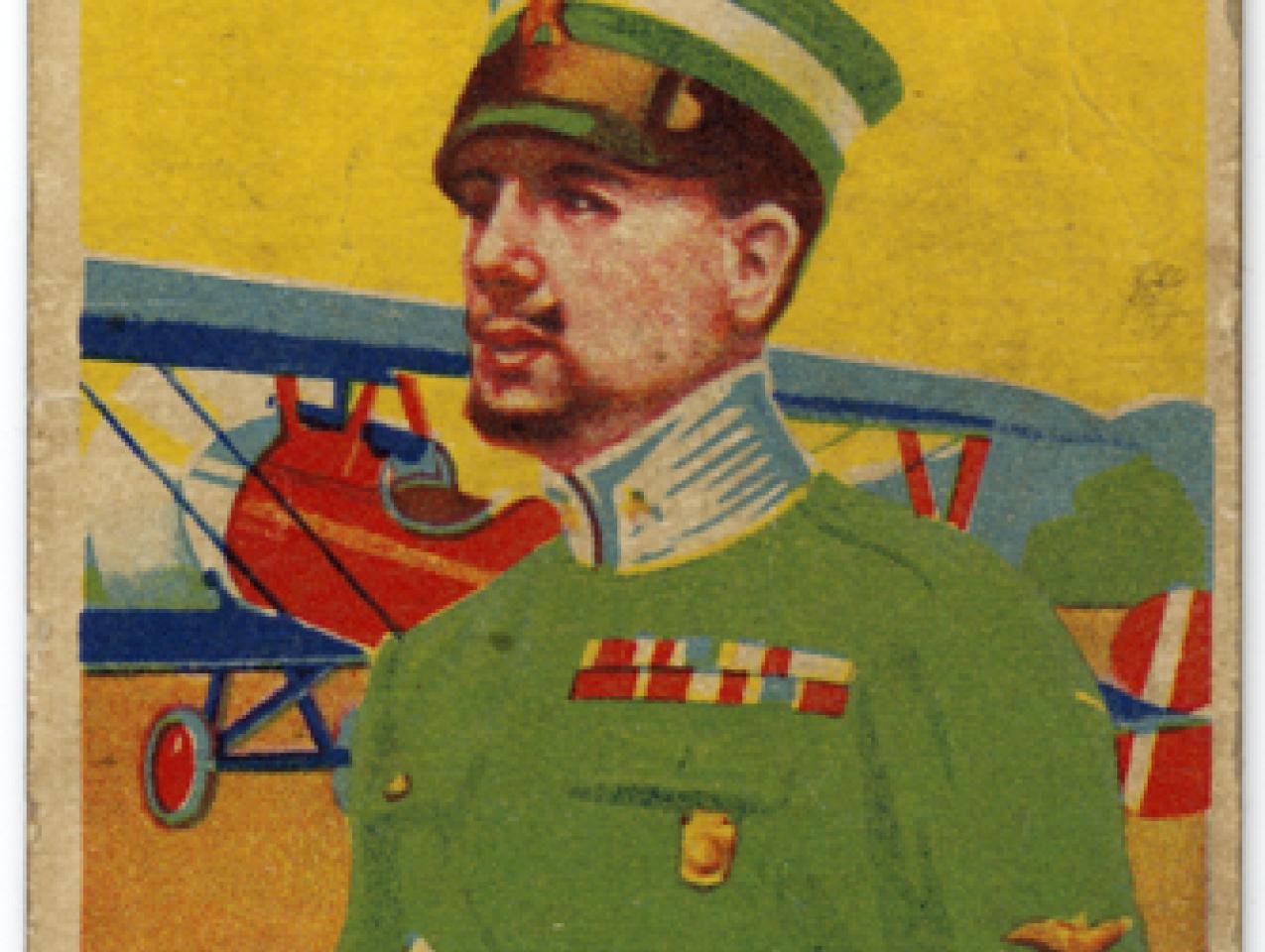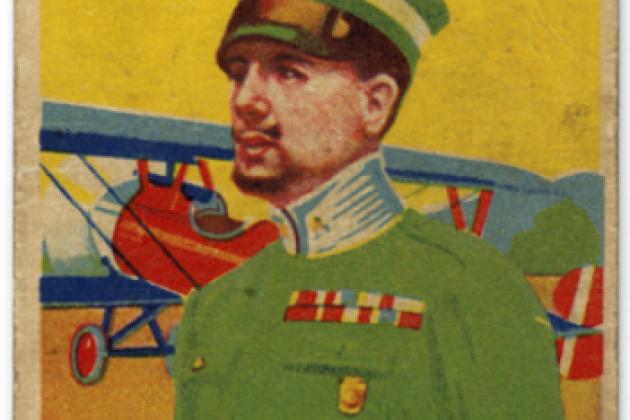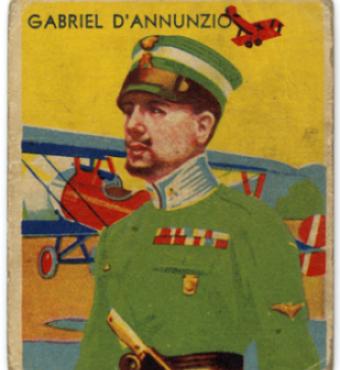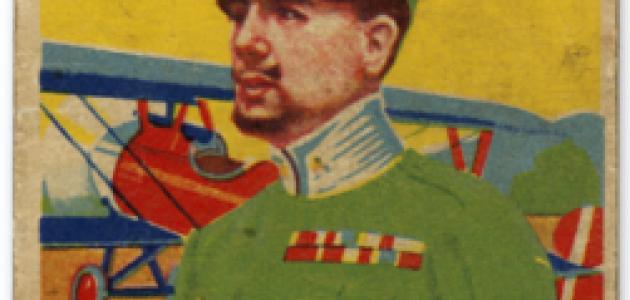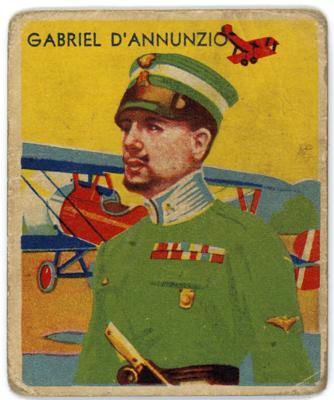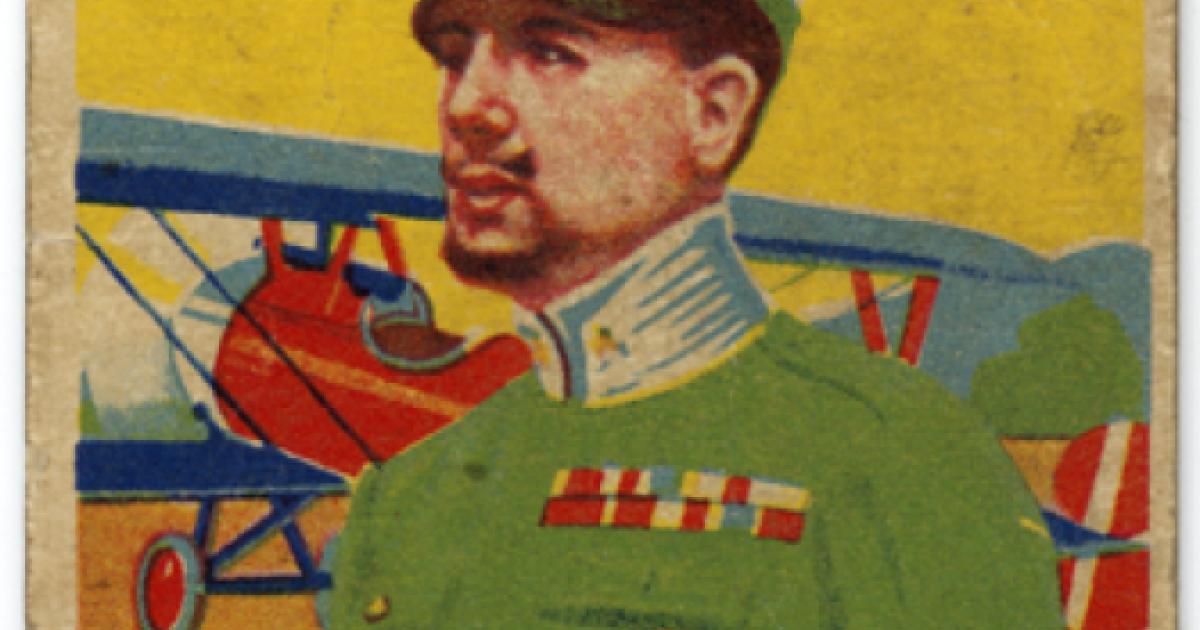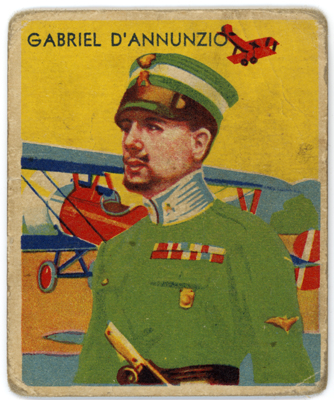
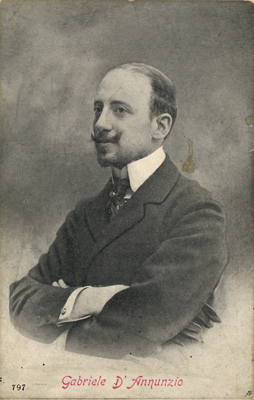
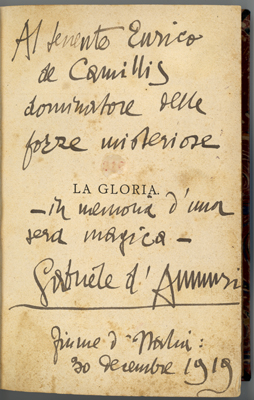
The Archives has added a small but valuable Gabriele D’Annunzio collection to its world-famous World War I holdings. D’Annunzio (1863–1938) was an Italian poet, novelist, playwright, and nationalist who, though not directly involved in the fascist movement, had a strong impact on the ideology of Benito Mussolini.
When World War I began, D’Annunzio successfully agitated for Italy’s entry into the conflict on the side of the Triple Entente of France, Britain, and Russia. He had been interested in aviation ever since 1908, when he took a flight with Wilbur Wright. When fighting began, he volunteered as a fighter pilot and became an instant celebrity. Undeterred by losing the sight of one eye in a flying accident, D’Annunzio participated in a daring air raid on the harbor of Bakar in Austrian Croatia. The war, however, did not go well for Italy, which suffered tremendous casualties against Austro-Hungary in a series of battles fought mostly in northeast Italy and western Slovenia; D’Annunzio’s exploits helped raise the spirits of the Italian public. Even more celebrated than the Bakar raid was D’Annunzio’s famous il Volo su Vienna (flight over Vienna) of August 9, 1918, when he led nine planes of his fighter squadron in a seven-hundred-mile round trip to drop propaganda leaflets on Vienna. Disappointment and anger over the treatment of Italy at the Paris Peace Conference radicalized D’Annuzio’s nationalism and irredentism to such an extent that he led an invasion by a small force of Italian volunteers of the city of Fiume (now Rijeka in Croatia), which he held for two years as an independent state with himself as Duce (leader). The Fiume episode was ultimately unsuccessful, but D’Annunzio’s philosophy influenced the ideology and ritual of the later Italian Fascist movement of the second Il Duce, Benito Mussolini.
The acquired materials include contemporary facsimiles of D’Annunzio’s leaflets, proclamations, and letters pertaining to the flight over Vienna in August 1918. In addition, there is an inscribed copy of his personal political drama La Gloria, as well as photographs and postcards.
Maciej Siekierski siekierski@stanford.edu




